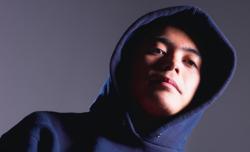Read Slate’s complete coverage of the Trayvon Martin case.
Protesters held a “million hoodie march” in New York’s Union Square on Wednesday to advocate for the prosecution of George Zimmerman, the Florida man who killed teenager Trayvon Martin during a February neighborhood watch patrol. Martin was wearing a hooded sweatshirt on the night he was killed, and it may have led Zimmerman to describe him as a “real suspicious guy” to a 911 operator. When did the hood become associated with troublemakers?
At least 800 years ago. London was plagued by young, unsupervised apprentice boys during the 12th century. They were always rioting over some political or religious issue, and they often wore hoods to hide their identities. At the time, hoods were common among law-abiding folks as well, but they were especially emblematic of young hooligans.
The hood is a millennia-old accessory, and its long history has led to both positive and negative associations. Hoods can be a symbol of piety, honor, and respect. Ancient Romans pulled part of their togas over their heads during prayer. People who have earned advanced degrees are “hooded” as part of the graduation ceremony. Cloistered Catholic monks often wear hooded robes. But the hood is also associated with hiding one’s identity for illicit purposes, and not just among 12th-century teenage miscreants. During the 17th century, images circulated in England of young women sporting hoods (and sometimes a Zorro-style eye masks) to maintain anonymity while visiting their lovers.
Indeed, hoods are considered such powerful instruments of disguise that they are banned on public streets in some parts of the United States. The Georgia code states: “A person is guilty of a misdemeanor when he wears a mask, hood, or device by which any portion of the face is so hidden, concealed, or covered as to conceal the identity of the wearer and is upon any public way or public property.” (The law does not apply to holiday costumes, so trick-or-treating remains perfectly legal.) Many other states have similar prohibitions. Several Occupy Wall Street Protesters who sported Guy Fawkes masks were cited for violating the New York version of the statute.
The hooded sweatshirt doesn’t have the same long history as the hood itself. The Champion clothing company invented it in the 1930s. According to some, the hoodie was intended for warehouse workers in frigid upstate New York. That may be true, but the hooded sweatshirt quickly became popular with young people. Sears and Roebuck catalogs from the same decade offered hooded sweatshirts for $1 with the pitch “keep warm for winter sports,” and noted they were “great for boys.” (The hooded sweatshirt’s surge in popularity mirrored that of Mickey Mouse, who was born in 1928 and featured on sweatshirts in the same 1930s Sears spread as the hoodies.) Hoodies became associated street-toughs when Rocky captivated the American movie audience in the late 1970s. Some people began to associate the hooded sweatshirt with hoodlums in the 1970s, as graffiti artists and criminal gang members used them to hide their identities.
Got a question about today’s news? Ask the Explainer.
Explainer thanks Mary Thomasine Harkins of Emerson College.
Video Explainer: Why Is Anchovies Still A Pizza Topping?
